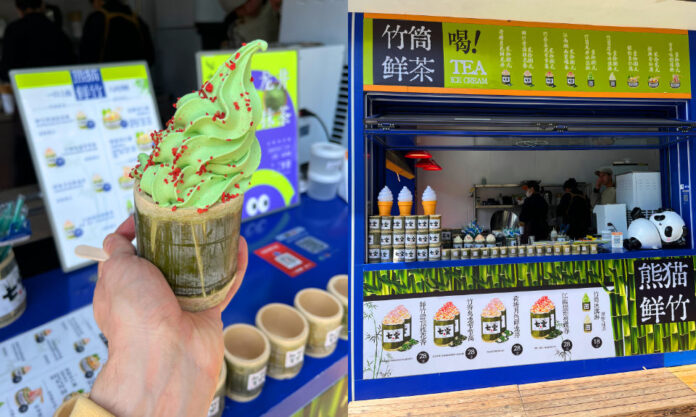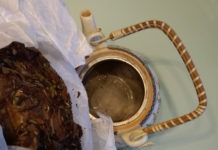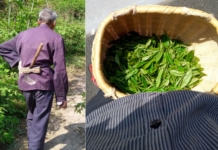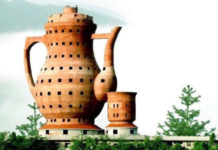You don’t need to come to Asia to encounter bamboo; it’s there on the steering wheel of the E-Type Jaguar, on umbrella handles, there on that corporal punishment device once kept behind teachers’ desks.
Even edible bamboo was a concept familiar to me before I arrived here; bamboo shoots in tins were part of my English mother’s cooking in the 1980s. But, as with many things we already know about China, we’re not prepared for the abundance or the variety.
The bamboo shoots that appear in Chinese dishes in the real China are different; instead of uniform rectangles, the shoots in the bizarrely-named, Fish-Fragrance Pork [鱼香肉丝], are either like little triangular ladders or like matchsticks matching the tangy carrot and sliced pepper.
Bamboo, and that delicious food dish, was common in the city where I first touched down, Beijing, and bamboo is even more common here in Jiangnan, where far more varieties can grow comfortably. How wonderful to witness a green stem catch up with an upstairs window, to get lost in a grove or to feast on baby shoots in Spring.
Why are bamboo chopsticks greener than wooden chopsticks? It’s because the time required to regrow the same hard mass is quicker, and less thirsty of water. This is truly a green wonder-material.
The bamboo cup containing my tea right now is nothing more than one segment sliced from a thick green bamboo stalk. It does the job, dissipating heat quite quickly, remaining watertight and satisfyingly warm in the hand. It doesn’t impart that astringent flavour which (we all know!) bamboo shoots can sometimes possess.
When I bought my cup, for ¥18, it came filled with green-tea ice cream. It was the simplified “茶” tea character that had caught my eye while walking around the old town. I bought my daughter one cup with vanilla, too, but both of us agree that the tea was better. It was her idea to keep these forever, to treat them less like paper cups and more like tumblers. So far so good.
There’s a term called “patina” which describes the permanent residue that builds in, say, a clay teapot’s interior. Here, sadly, it is too pronounced. There’s no escaping that vanilla from the cup’s first gig. And, though basically water-tight, this material is much more permeable than clay. I’m expecting these cups to go moldy before long.
As well as the internal patina, I was just as interested in the exterior “bloom” on these beautiful bamboo segments. The whiteness, like a frost, seemed especially well suited to its ice-cream application. I like to think that Carlos Williams’ plums had a dusting of the same stuff. Providing resistance against pests, this bloom, chalk white on green gloss, is irresistible to me. Of course it didn’t survive many washings and sippings. But it’s indelibly here on the page.
This bamboo cup doesn’t make my tea taste any better than usual. And I’m sure it will not last much longer. But it’s a tribute to this wonder-material that only two strokes of processing are required to make a charming bowl or cup. And it’s a tribute to the imagination of these young ice-cream sellers that they chose two national treasures and not that menace called plastic.












